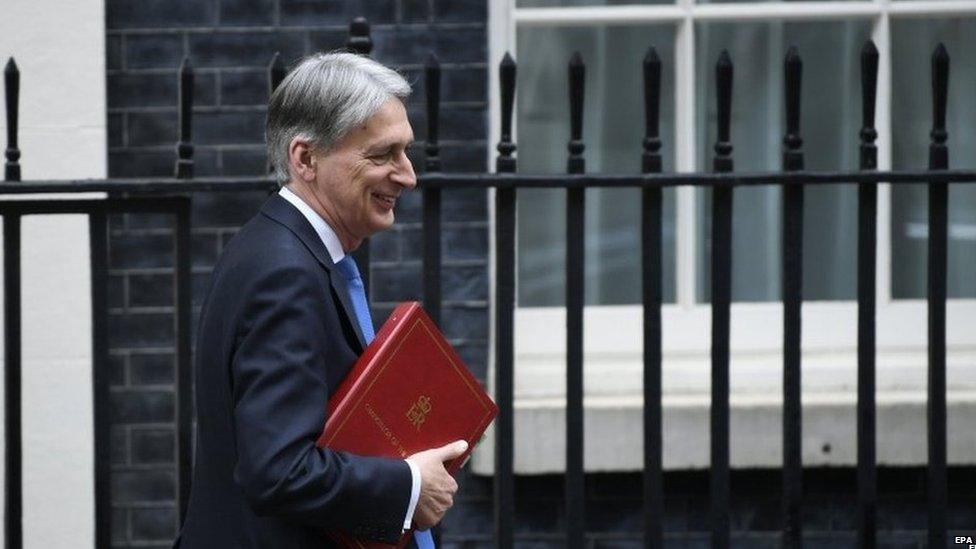Spring Statement: What were the key points?
- Published

Chancellor Philip Hammond has updated Parliament on the state of the economy and the nation's finances. Here are the main points from his Spring Statement.
Economy
Growth forecast for 2018 revised upwards from 1.4% to 1.5%
1.3% growth forecast for 2019 and 2020 left unchanged
Inflation forecast to fall from 3% now to 2% by end of year
Wages expected to rise faster than prices over the next five years
Public finances
Government forecast to borrow 拢45.2bn in 2017-8, 拢4.7bn lower than predicted in November
Borrowing forecast to fall every financial year to 拢21.4bn in 2021-22
Debt as a share of GDP to fall from 85.6% in 2017-8 to 85.5% in 2018-9
Ratio set to drop to 85.1% in 2019-20, 82.1% in 2020-21 and 78.3% in 2021-22
Cost of debt interest payments remains about 拢50bn a year
Spending
拢1.5bn allocated so far to departments to prepare for Brexit in March 2019
拢1.67bn given to London to start building a further 27,000 affordable homes by end of 2021-22
Budget for Housing Growth Partnership to be more than doubled to 拢220m
The National Living Wage will rise, as previously announced, to 拢7.83 an hour in April
Tax
60,000 first-time buyers have benefited from stamp duty holiday in November's Budget
Consultation on reducing tax on the least polluting vans
Consultation on tax changes to discourage use of single-use plastic, including takeaway boxes and disposable cups
拢20m for firms businesses and universities to research ways to reduce plastic's environmental impact
Consultation on a new VAT collection mechanism for online sales
Government sets out ideas for "fairer" taxation of multinational digital businesses
Consultation on extending current training tax relief to self-employed people and employees
Business
Next revaluation of business rates to be brought forward by one year to 2021
English cities invited to bid for remaining 拢840m from regional transport fund
拢95m to be given to 13 areas for rollout of full-fibre broadband
Consultation launched on the role of cash in the new economy, including future demand for 1p and 2p pieces and 拢50 notes